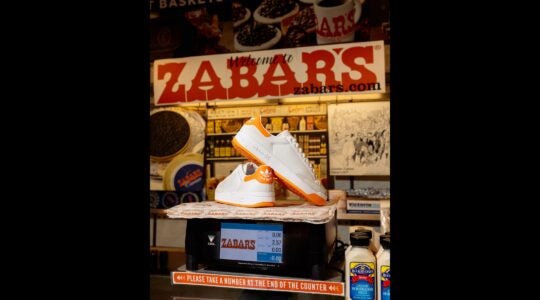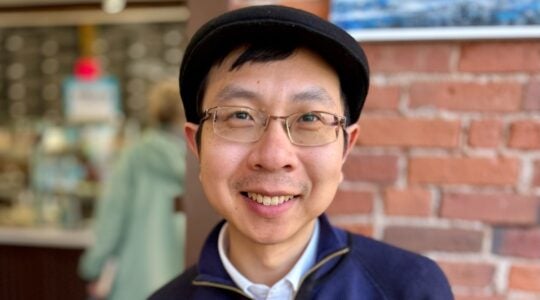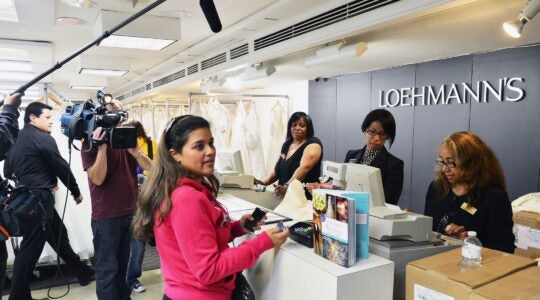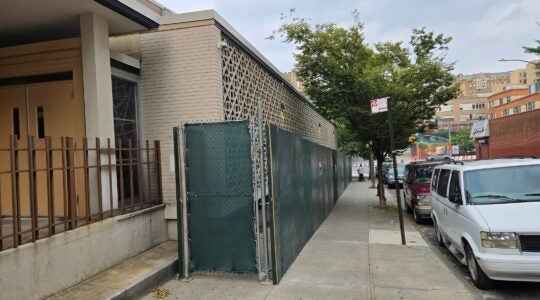Constanza Garcia was looking to book New York performances for “Klezmer en Buenos Aires” — a tango-inflected klezmer duo that she promotes. She immediately thought of Makor, the cultural center on the Upper West Side that caters to Jews in their 20s and 30s.
“I thought Makor would be the right place for klezmer,” Garcia says. But Makor passed.
No matter. As Garcia discovered, there is no shortage of venues for klezmer these days. In October alone, New York’s groovers and shakers will be able to hear klezmer bands at no fewer than seven venues — from an elegant hall on Park Avenue to a renovated factory in Williamsburg.
“It’s definitely gone beyond the Jewish Community Center circuit,” says Boo Froebel, artistic director at the 5-year-old Galapagos Arts Space. In late September, the cavernous club in a former mayonnaise factory in Williamsburg featured the Sway Machinery, whose sound has been described as “what would happen if [rock and pop acts Frank] Zappa, Brian Ferry and the Stray Cats decided to play bar mitzvahs.”
This month, Froebel has booked the klezmer-rock group Golem, which played last month at Makor and takes the stage this Sunday at Tonic on the Lower East Side for two sets at the weekly Klezmer Brunch.
Brice Rosenbloom, Makor’s director of music programming, says he passed on the Argentine duo of Cesar Lerner and Morcelo Moguilevsky, because his October schedule was already packed solid. “That’s the reality of the New York music scene,” he says. The dense Jewish population means that “by default a lot of Jewish music is happening.”
Much of the appeal of Jewish music today is the way bands are blending klezmer’s classic bulghars and freylakhs with contemporary popular-music styles. “It’s absolutely crossed boundaries into hip-hop and reggae and electronic and singer-songwriter,” says Rosenbloom. “It can be everything. It’s not just klezmer anymore.” The syncretistic sounds make “Jewish music” work in a wide variety of club’s programming formats.
An explosion in world music has also buoyed klezmer music’s popularity among audiences hungry for alternatives to straight pop and rock. According to Robert Browning, the director of the 18-year-old World Music Institute, over the past quarter century, the genre has grown “bigger than jazz and is catching up to classical” in terms of record sales.
And the most popular crossover Jewish sound is klezmer, says Henry Sapoznik, author of “Klezmer! Jewish Music from Old World to Our World” (Macmillan Library 1999).
That wasn’t true in 1979, when Sapoznik and his band Kapelye reanimated klezmer in New York. In those days, Sapoznik found an audience at Jewish institutions like the YIVO Institute for Jewish Research and the American Jewish Congress’s now defunct Martin Steinberg Center. Their first “fusion” event, Sapoznik says, occurred at the Jewish Museum, where Kapelye played klezmer and “Jewish jazz.”
“That was historic fusion music,” Sapoznik says. “It wasn’t klezmer and Cajun or Etruscan,” the kind of “strange mixes” being blended today.
Sapoznik, admits he’s on the “stodgier end” of the klezmer spectrum. He founded the annual Klezkamp event in 1985 as a “hothouse” where veteran players like Pete Sokolow, Ray Musiker and Paul Pinkus can instruct a new generation in traditional musicianship.
On the other end of the spectrum, he says, is the edgy, more experimental style of the Klezmatics, who in the mid-1980s infused klezmer with world music and progressive themes. Their downtown shows at the alternative music mecca the Knitting Factory, then on East Houston Street, and other special projects helped open new frontiers, both musical and geographic, to klezmer bands.
In 1998 David Krakauer, then the Klezmatics’ clarinet player and now something of a cult figure in Europe, started the Klezmer Brunch at Tonic, housed in a former kosher wine factory on the Norfolk Street just north of Delancey. Krakauer’s aim, he says, was to give klezmer “a regular presence in New York City.”
The event, which started up a new season last week with an appearance by his own group, Klezmer Madness, has yet to find a consistent following of its own. But it does serve as a showcase for klezmer acts “who know what they’re doing,” Krakauer says.
The Klezmatics’ fiddler Alicia Svigals stopped by to hear Klezmer en Buenos Aires the last time it took the Tonic stage. This month, she’ll be joining the Argentinian duo, Cesar Lerner and Marcelo Moguilevsky, before the cocktail-sipping crowds at Joe’s Pub and in a family concert at the Americas Society, an Upper East Side cultural center founded in 1965 by David Rockefeller.
The Americas Society sees the performance as keeping with its mission to promote Latin American culture in all its forms, and to overcome stereotypes of Latin music as “a Mexican with a big sombrero,” says Maria Elena Tobon, the Society’s music director.
Klezmer en Buenos Aires interested Bill Bragin, director of Joe’s Pub, because of the duo’s references to tango and South American folk music. “Artistically, one of the things that interests me is people pulling in a number of different influences,” Bragin says. “Hybridized styles hold a big fascination for me.”
That’s clear from the October schedule at Joe’s Pub, which includes Lerner and Moguilevsky, the Hip Hop Hoodios (see sidebar), and Pharaoh’s Daughter, Basya Schechter’s band that builds on a base of Jewish spiritual music with the rhythms and harmonic-minor melodies of Mediterranean music.
Traditionalists may worry that the foundations of klezmer will eventually become buried under layers of outside influences, but advocates of klezmer fusion see it as a way to keep the music vital and, in Krakauer’s words, “keep it out of the museum.”
Marcelo Moguilevsky, who as a child learned to play Jewish melodies on the violin from his 80-year-old grandfather, is convinced that authentic klezmer will never die. Klezmer has always fused with the surrounding cultures where Jews lived, he writes by e-mail. “We are all limbs from the same tree.”
Cracow Klezmer plays Friday, Oct. 4 at the Knitting Factory, 74 Leonard St, (212) 219-3006 at 7 and 8:30 p.m., $10; Sunday, Oct.6 at Tonic, 107 Norfolk St., (212) 358-7501, 8 p.m., $10.
Klezmer en Buenos Aires with special guest Alicia Svigals plays Sunday, Oct. 6 at the Americas Society, 680 Park Ave., (212) 249-8950, Ext. 463 at 2 p.m., $5 in advance, $9 at the door; on Sunday, Oct. 20 at Joe’s Pub, 425 Lafayette St., (212) 539-8778 at 9:30 p.m., $15 in advance, $20 at the door. The duo of Lerner and Moguilevsky plays on Sunday, Oct. 20 at Kings Bay Y, 3495 Nostrand Ave., Brooklyn. (718) 648-7703, Ext. 258 at 2 p.m., $8-$10.
Khevrisa plays on Sunday, Oct. 6 as part of the World Music Institute’s concert series, at Symphony Space, Broadway at 95th Street, (212) 864-5400, 7 p.m., $15-$21.
Golem plays the Sunday, Oct. 6. Klezmer Brunch at Tonic, 1:30 and 3 p.m., $10 per show, $15 for both; on Friday, Oct. 11 at Galapagos Art Space, 70 N. 6th St., Brooklyn, (718) 782-5188. 10 p.m., $7.
Greg Wall and Simcha All-Stars play Monday, Oct. 28 at Makor, 8 p.m., $15.
The Andy Statman Trio plays Thursday, Oct. 24 at the Museum of Jewish Heritage-A Living Memorial to the Holocaust, 18 First Place, Battery Park City, (212) 945-0039, 7 p.m., $10, $12.
Metropolitan Klezmer plays the Sunday, Oct. 27 Klezmer Brunch at Tonic, 1:30 and 3 p.m., $10 per show, $15 for both.
Margot Leverett and the klezmer Mountain Boys play on Wednesday, Oct. 30 at Terra Blues, 149 Bleecker St., (212) 777-7776, 8:30 p.m., no cover, two drink minimum.
Pharaoh’s Daughter plays Thursday, Oct. 10 at Joe’s Pub, 9:30 p.m., $12.
All events take place in Manhattan unless otherwise noted.
The New York Jewish Week brings you the stories behind the headlines, keeping you connected to Jewish life in New York. Help sustain the reporting you trust by donating today.




